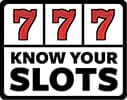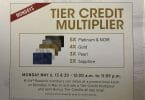In one of the slot groups that I’m a part, a recent conversation came up around the CDC Gaming Reports monthly charts, which offers information around the top games each month.
Among the data points they calculate is a Games Played metric, which allows for a comparison across different games of how much they’re getting played, and Theoretical Win, which also ranks games based on their relative win.
They then calculate a Games Played Theoretical Win (GPTW) calculation, which leverages those two stats together to get a third stat that takes both calculations into account.
The fact that it takes popularity and profitability and puts it together for a statistic can make it a compelling statistic, even though they note there’s a bias against high limit machine types because they tend to get played less.
Part of my reason for talking about this is the data is interesting and shows what games players are into, but part of it is the confusion around this data. I saw at least one slot player thing a lower GPTW is better because they thought it meant a lower win for the casino means a higher payback for the player.
First, like any snapshot in time data, you may not gleam a true understanding of a game’s long term payback. But in the case of this reporting, it’s talking about numerical win moreso than percentage win, because each casino to some degree controls its own destiny by deciding the payback setting of a game.
But games played and amounts bet will generate win numbers that can then allow games to be somewhat properly compared. And these charts, which are built first and foremost for casino operators, are designed to show which games are producing the most for casinos. Those operators on the fence around new or popular games may see what they need here to bring them into their casinos as it’ll feel less risky.
But these reports won’t tell you if a particular game has a high hold or not. That’s not the purpose of the report, and each casino has a handful of options to select from anyway.








